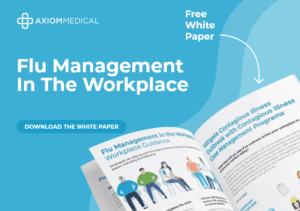Embracing Automotive Tech by Minimizing Human Tolls.
As autonomous OTR freight reshapes logistics, it also reshapes risk.
Autonomous Trucks: A Strategic Bet on the Middle Mile
Self-driving trucks, also known as autonomous over-the-road (OTR) freight, are now a reality. And they have the potential to solve big problems in the logistics industry. Serious issues that keep logistics managers up at night, like driver shortages (which are projected to double by 2030), rising labor costs, and the ever-increasing pressure to deliver everything faster.
In particular, investors are betting on the autonomous middle mile: those long stretches of highway between distribution hubs. These routes are predictable, repetitive, and perfectly suited for robot trucks. Additionally, autonomous OTR freight takes advantage of the highway infrastructure we already have. No need for billion-dollar overhauls to build new tracks or terminals.
Why Is Autonomous OTR Freight Better Than Rail?
Here’s the thing about rail—it’s incredibly efficient when it comes to fuel and labor costs per ton-mile. But flexibility? That’s where it falls short. Trucks can pull up to your front door. Trains stop at train stations, period. That “last mile” problem has been rail’s nemesis for decades, and they still haven’t cracked it.
Combine that with painfully slow innovation cycles and enormous capital requirements. It becomes clear why rail can’t keep up with the agility of driverless trucking technology. For investors looking to shake up the freight world, autonomous OTR freight presents the clearest on-ramp.
Workers Will Remain at the Wheel of Autonomous Freight
Here’s what’s interesting—while autonomous tech is streamlining the middle part of the journey, the beginning and end are still very much human territory. And those are actually the most complicated parts of the whole operation.
Driver-Free? Yes. Injury-Free? No.
As autonomous OTR freight reshapes logistics, it also reshapes risk. Fewer highway drivers means fewer highway injuries, but it also introduces new concentrations of risk where human labor remains vital.
Injury management must meet risk where it’s shifting:
| Focus Area | Why It Matters |
| Urban & last-mile workers | Dense traffic, gig economy strain, and rising demand |
| Warehouses & fulfillment | High speed, ergonomic strain, and tech-human interaction |
| Yard operations | Heavy equipment, fast-paced movement, and physical toll |
| Heat stress | Non-air-conditioned facilities, long shifts, and climate extremes |
| Mental health & fatigue | 24/7 operations produce burnout and behavioral risks |
The smartest injury management providers are already deploying proactive triage and injury prevention programs to warehouses and delivery hubs. They’re helping gig workers get back on the job faster when they do get hurt. And they’re using apps and wearable tech to keep an eye on things like heat stress and mental health before problems get serious.
Robotics may be the future of freight. But for the foreseeable future, injury risk still rides along. Luckily, Axiom Medical is here to help protect your most valuable asset—people.










